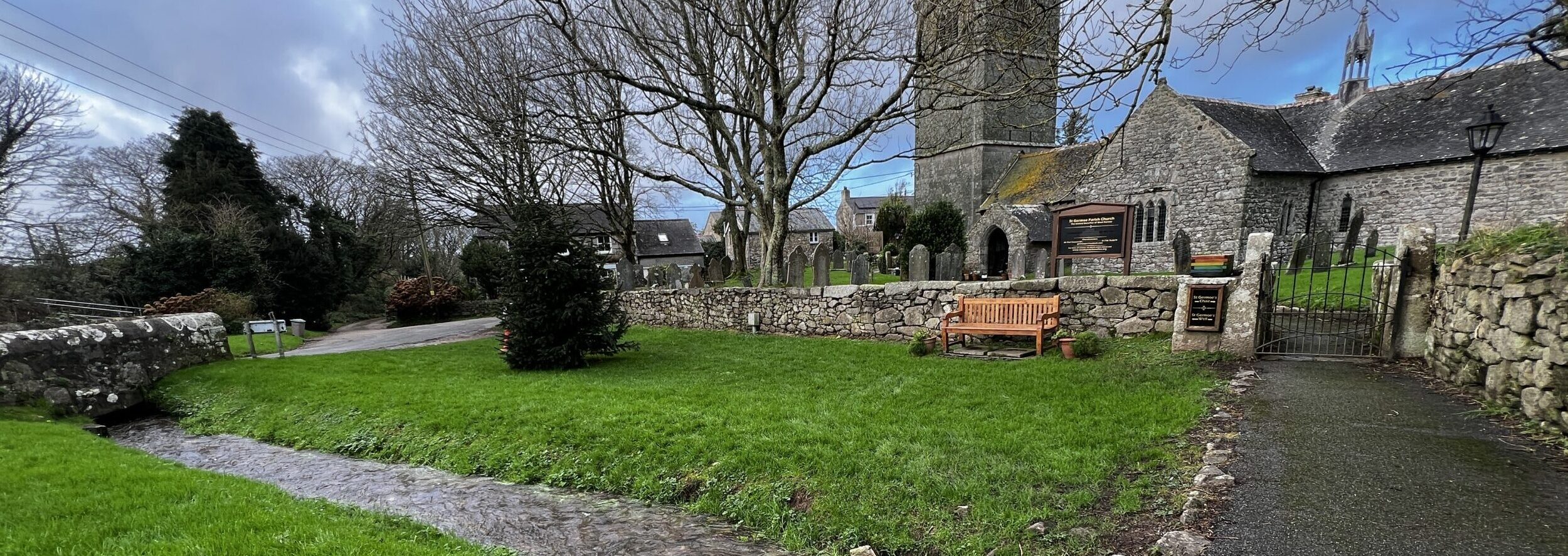
In January of this year, I had the chance to visit one of my ancestral villages, Germoe, in Cornwall, England. The history of Germoe is closely tied to Germochus, a Celtic king, and his sister Breaca. Both were part of a band of Irish holy missionaries who arrived near the Hayle Estuary around 600 AD. They journeyed along the waterway to its source at Tregonning Hill, a prominent land formation rising above the surrounding woodland. St. Breaca settled on the hillside, where a Celtic settlement had existed during the Bronze and Iron Ages, near what is now Breage. Germochus, on the other hand, chose the valley that would eventually become the village of Germoe.
After picking up my rental car in Penzance that afternoon, I set off for Germoe, only 13 minutes away according to my GPS. I had virtually walked this route several times using Google Maps Street View, but seeing it in person was an entirely different experience. The vastness of the landscape, the openness, was something that no map could truly convey.
As I turned off the A394 onto the narrow road leading into Germoe, it was clear these paths were ancient, laid down long before the thought of cars. The greenery-lined road lasted barely half a mile before I arrived at the open greenspace and car park near the church.
Stepping out of the car, I was immediately struck by the profound silence. The wind was strong that day, but there was no sound of traffic, no hum of industry—only the natural world around me. It felt like stepping back in time. To enter the churchyard, I crossed a babbling brook, swollen and swift from recent rains. It was only about 40 feet from the car park to the churchyard, but it took me nearly five minutes to make the short walk. I stood there, absorbing the moment, trying to imprint it on my memory.
I can trace my family back to this exact location over 330 years ago. The church itself dates back to 1100 AD, with expansions, including the tower, added in the 1300s. We’re talking about nearly 900 years of history in this place. The stone baptismal font inside the church even predates the Norman Conquest of 1066.
It’s incredible that this place still stands, allowing people to reconnect with our deep-rooted history. It felt like a true homecoming.
Though I’m not religious, if there were ever a church to draw me in, this would be the one. The experience was profoundly spiritual, as if every ancestor who came before me was there, watching me explore their community.
I entered the church through a thick wooden door, finding myself alone in the quiet space. I couldn’t immediately locate the light switch, but I didn’t mind. It seemed fitting to experience the church as my ancestors would have, without the modern intrusion of electric lights.
The wind rattled the doors and latches, a reminder of the age and character of this sacred place. I slowly made my way to the altar, taking in the wooden beams of the ceiling and the stone columns that lined the aisles. A stained glass window rose high above the altar, its inscription reading:
“In holy memory of Richard Tyacke who died AD 1825 and of Sibella his wife who died AD 1854.”
Richard was the brother-in-law of my cousin, James Lemon, who married Mary Tyacke. James’ parents, William Lemon and Elizabeth Plomer, were my 6th great aunt and uncle.
On the wall, a list of vicars dated back to the year 1219—a remarkable record of continuity.
A framed map of the parish hung nearby, marked with place names I had heard of but never seen on a map. Places like Rejarden, where my family spent much of their time in Germoe, and Trennal, where my 7th great-grandfather, Samuel Lemon, held a 1760 lease from Lord Godolphin for 99 years. Seeing these names gave me a clearer understanding of their proximity to modern locations. Though some farms and lanes appear overgrown, lost to time, the landscape still bears the marks of my ancestors’ lives.
Looking up through the glass panes, I could see the wooden floor of the bell chamber in the tower. The church history booklet, written in 1995 by the late K.Y. Ashwell, revealed:
“The three bells were purchased and placed in the tower by public subscription in 1753. All bear that date and the founder’s mark, a bell. Two have the founder’s initials, ‘A.R.’ The tenor bell of seven hundredweight records the names of Edward Collins, Vicar; Samuel Lemon and Simon Harry, Churchwardens. The second bell of five and a half hundredweight bears the inscription: ‘Prosperity to the parish.’ The third bell or treble, of four and a half hundredweight, records the fact that ‘Abel Rudhall cast us all.'”
The pulpit bore an inscription that struck close to home:
“James Plomer Lemon, for many years Churchwarden of St. Germoe, died at Rejarden January 2nd, 1887, also of Henrietta Lemon his wife, died at Marazion May 3rd, 1903. Erected by their only son James Frederick Lemon.”
Samuel Lemon, mentioned here, was my 7th great-grandfather. James Plomer Lemon was my 2nd cousin, 6x removed, the son of James Lemon and Mary Tyacke. His uncle Richard and aunt Sibella are the ones memorialized in the stained glass window.
The churchyard, enclosed by a stone wall, extends from the church down the length of the property. Along the furthest wall is a shrine to St. Germoe, referred to as his Chair. For centuries, this was a place of pilgrimage and is still used in Palm Sunday traditions, where parishioners pay their respects to the old Saint, once thought to be his final resting place.
As I wandered through the churchyard, I tried to read as many headstones as I could. So many of my ancestors are buried here, though many now rest in unmarked graves, their stones worn away by time.
Leaving the churchyard through the same wrought iron gate, I paused once more to listen to the rushing brook. I found comfort in the thought that my ancestors might have stood in that same spot, hearing that same sound, on a windy January day.

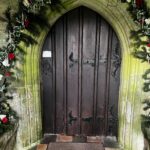
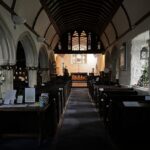
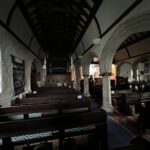
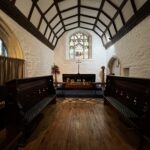
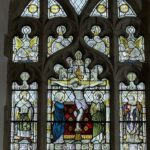
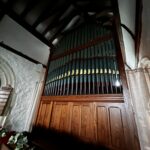
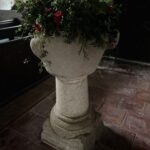
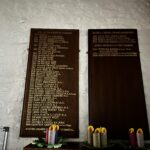
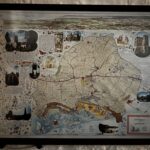
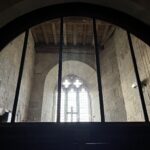
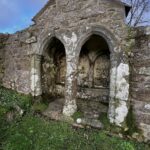
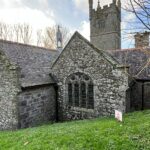
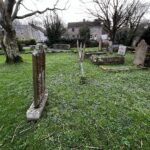
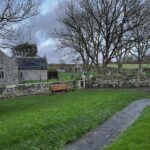
Thanks Cuz! Give my best to Ruth and Paul! My visit with them will be an upcoming post as I make my way through writing about the trip!
Give my best to Ruth and Paul! My visit with them will be an upcoming post as I make my way through writing about the trip!
What a wonderful tribute to your ancestors! Eloquently written! Look forward to reading more!
Interesting to hear about your ancestry visit, and the Cornish side of your family. I’m currently in Cornwall visiting my sister, from the other side of your ancestral line back to my paternal great grandfather. Have also traced family history back to the 1600s in south Devon on my mother’s side of the family.
I really enjoyed your story Amie, I was right there with you the entire way. What a great tribute to your family to research them and make the trek there.